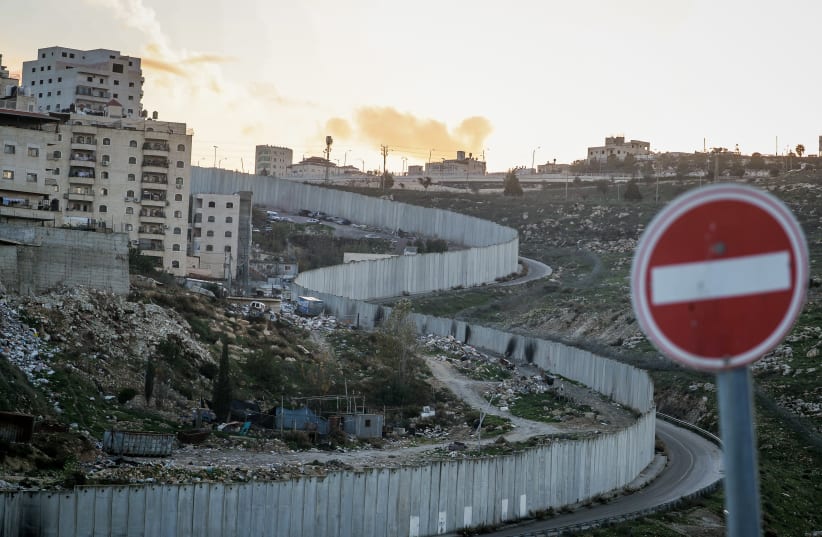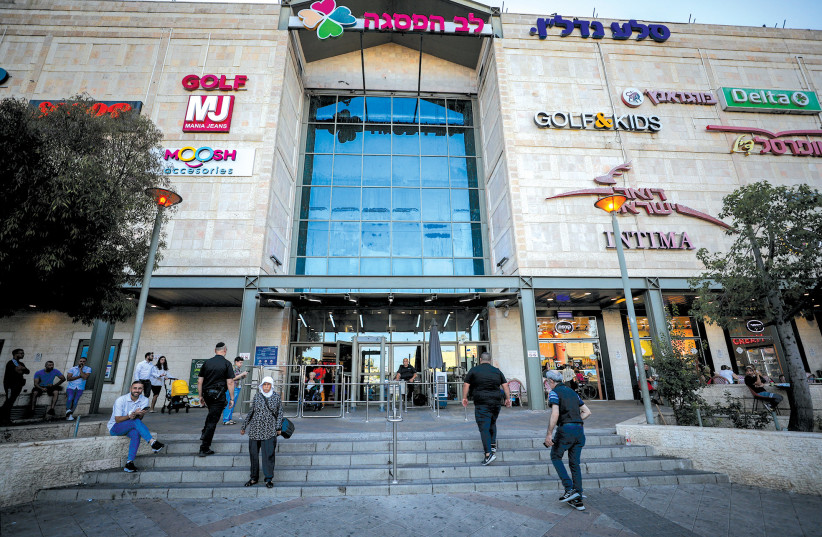The recent announcement about the discovery of an explosives laboratory in the Shuafat refugee camp did not surprise residents of Pisgat Ze’ev. They are used to the sounds of explosions and automatic weapons for years and have even become accustomed to collecting the bullet casings from the children’s trampolines.
This is what neighborhood resident and journalist Uri Rodriguez Garcia wrote this week, with more than a hint of bitterness. However, starting on October 7, what was almost background noise that many have become used to has turned into a real state of war.
Crisis in Pisgat Ze'ev: Fears of Palestinian attack post-October 7
Yael Entebi, a long-time resident and candidate for city council (although municipal elections have been temporarily postponed due to the war), said that the craziest thing about this situation is that it is not an area in the territories and not in Gaza – but here, in Jerusalem, the capital of Israel.
Recently, parents of children who participate in sports classes in a facility located next to the security fence asked authorities to provide solutions to the dangerous situation before a disaster occurs. Parents who attend evening classes at the Teddy Kollek School, near the security fence, are demanding that armed guards be stationed there. So far, the municipality has authorized increased patrols in the area, but that solution hasn’t calmed the parents.
In fact, tensions rose after dozens of Palestinians tried to cross the security fence and were stopped only after police were called. As a result, parents of the children who participate in the afternoon and evening classes at the Teddy Kollek School say that their children’s safety is being neglected and are refusing to continue “business as usual.”
“There is no security and no lighting. It’s 200 meters from the seam line. It’s really scary,” said one parent, adding that the school, about 200 m. from the Hizmeh checkpoint, is only a five-minute walk. “The road from the parking lot to the sports hall is very dark, there is no lighting, and small children [who go there] are afraid to attend.”
As of this week, a security squad has started to operate in Pisgat Ze’ev, as well as in 10 other neighborhoods.
“That is very good,” affirmed Antebi, “but it is far from being enough. Our houses are a few meters away from these Arab neighborhoods built after the security fence was erected. These are areas rife with crime, the weapons there are in everyone’s hands, and they shoot indiscriminately.
“The Palestinians who moved there because of the affordable and new construction [are now fleeing] from there for their lives and returning to live in the east of the city as much as possible.”
Antebi observed that the lack of security in the neighborhood has been increasing, and did not start with October 7.
In response to the community’s concerns, the Jerusalem Municipality stated: “Pisgat Ze’ev’s community administration holds classes subject to the instructions of the Home Front Command, according to which holding an activity does not require the posting of a guard or security.
“At the same time, the community administration team asked the Home Front Command soldiers to conduct patrols in the afternoon and evening, with an emphasis on the sports halls and places where classes are held. As for the lighting in the area, the issue will be examined and addressed.”
In the wake of riots and serious disturbances that have taken place recently a few hundred meters away from houses on the perimeter of the community, near the security fence, the Jerusalem District Police announced last week that several security measures will be implemented in the neighborhood to ensure the security of the residents.
These will include increased patrols around the security fence. Security forces will also employ all existing means to disperse disturbances, and will act against those who try to breach the security fence.
PISGAT ZE’EV is a Jewish neighborhood in northeast Jerusalem, adjacent to Neveh Ya’acov. It has a mixed population of haredi, National Religious, and secular Jews. It is divided into five areas: central, north, south, east, and west, and is one of the ring neighborhoods around Jerusalem.
As of May 2022, approximately 45,100 residents live there; it is one of the largest neighborhoods in Jerusalem. Named after Zionist-Revisionist leader Ze’ev Jabotinsky, Pizgat Ze’ev was established on territories beyond the Green Line that have been effectively annexed to Israel after the 1967 Six Day War.
The main idea behind the establishment of the neighborhood was to create a Jewish urban continuum between French Hill and the Neveh Ya’acov neighborhood, which until then had been cut off from Jerusalem in terms of urban continuity.
Land designated for the establishment of the neighborhood was expropriated in early 1980, after a long delay by the Finance Ministry, which feared the high cost compensating some Jews who owned land there in the 1930s. In fact, part of the neighborhood was owned by Jews who perished in the Holocaust, and the heirs of three of them were aware of the purchase and received compensation for it at the time. The remaining Jewish owners died without leaving heirs, or their heirs are unaware of their right to the land.
The Ministerial Committee for Jerusalem Affairs made the official decision to establish the neighborhood on December 3, 1980, with the urban planning assigned to landscape architect Zvi Dekel. The construction of the neighborhood began in 1982, and the first houses were inhabited in 1985.
In 2007, Arab families began moving into Pisgat Ze’ev, with estimates of 1,500 Arabs living there now. In 2009, a group of rabbis called for a boycott of Jewish residents who were selling or renting apartments to Arabs; however, the boycott did not occur.
Since 2010, ultra-Orthodox families began to settle there as a bridge to nearby Neveh Ya’acov. Many moved to Pisgat Ze’ev north and central Pisgat Ze’ev, which had a mix of National Religious and secular Jews from the outset. Pisgat Ze’ev east, Pisgat Ze’ev west, and Pisgat Ze’ev south are still mostly populated by National Religious and secular Jews, primarily young families. ❖

